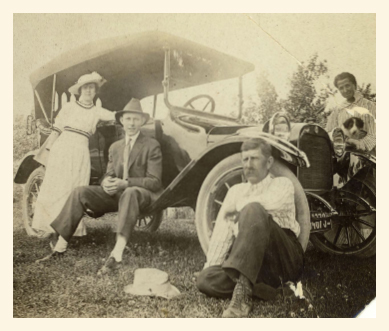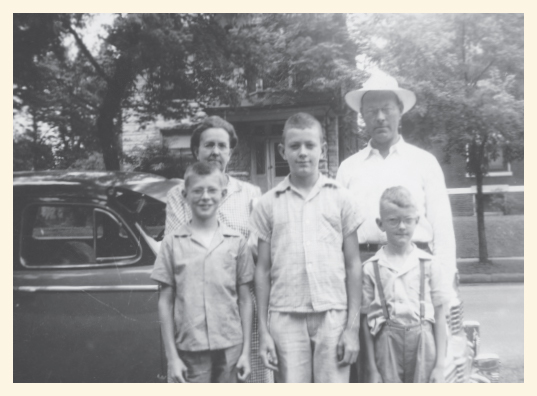By Kurt Rump
Do you have a family heirloom but you’re not sure why it’s an “heirloom”?
The time had come for Mom and Dad to downsize. Their modest home had barely seemed large enough while they were raising six kids. But now… decades later… it was more than they really needed, and definitely more than they could handle.
Downsizing comes with some difficult decisions, not the least of which is what to take with you. Or, framed another way, what to leave behind.
It starts out easy enough. The new bedroom needs a bed, dresser, and a couple of nightstands. There’s a tiny living room to be furnished with a favorite chair, small couch, floor lamp and end tables. The old kitchen table didn’t really fit in the tiny dining area, so a small one was purchased that better suited the available space.
 Then it gets harder. What about all the little things that make a house a home, like the pictures hanging on the walls? The knickknacks, curios, trinkets, and collectibles? Mom and Dad made a first pass through the house to gather up and haul away anything they deemed “not essential.” They said they got rid of a lot, but there was still a lot left.
Then it gets harder. What about all the little things that make a house a home, like the pictures hanging on the walls? The knickknacks, curios, trinkets, and collectibles? Mom and Dad made a first pass through the house to gather up and haul away anything they deemed “not essential.” They said they got rid of a lot, but there was still a lot left.
So, we got together at the old house to see what else they were willing to leave behind and, after a prolonged discussion, the answer in a nutshell was… “nothing.”
Maybe you have been through a similar process. Our approach went something like this: We sat them down and started sifting through things. The goal was to have a “keep” pile and a “let it go” pile. Items moved easily into the “keep” pile, which quickly grew. Things were only reluctantly “let go.”
We started pulling things out of the “keep” pile to revisit, asking “Are you sure you need this?” They conceded a few items, but then would struggle to release their grip. Letting go was hard. There was a sadness in their eyes as they followed items to the “let it go” pile.
This approach wasn’t working. Almost everything they had, they had for a reason, and we had barely made a dent in their stuff.
Sorry, but try as you might, you just cannot cram everything from the older, larger space into the newer, smaller one. Time for plan B… an intervention of sorts.
Rather than continuing to ask them to make tough decisions about a lifetime of accumulated possessions, we volunteered to furnish their new living space with as much as we could. Then, when they moved in and were adjusting to their new surroundings, if they found that “something was missing,” someone would go retrieve it for them.
Fast forward a few weeks.
It turns out that we did pretty well. Oh, there were a few little things that they still needed or wanted… but by and large, they were content.
Then one day my sister dropped by to check on them and Mom asked, “Where is that green vase?”
“What green vase?” my sister inquired.
Mom described what it looked like and where it sat in the old house.
“Oh,” my sister said, “I have it.” To which Mom declared, “I want it!”
 This was not going to be a negotiation. My sister simply said, “OK,” and agreed to deliver the vase the next time she stopped by. After all, those were the terms we had agreed to… if either Mom or Dad found that “something was missing” after the move, someone would retrieve it. There were no questions asked and no explanation was given. There didn’t need to be.
This was not going to be a negotiation. My sister simply said, “OK,” and agreed to deliver the vase the next time she stopped by. After all, those were the terms we had agreed to… if either Mom or Dad found that “something was missing” after the move, someone would retrieve it. There were no questions asked and no explanation was given. There didn’t need to be.
As it turns out, that was a missed opportunity.
Mom passed a few years later. Plans were made to move Dad to an assisted living facility… a smaller living space, and once again we found ourselves sifting through their stuff.
My sister regained possession of the green vase.
Dad died a year-and-a-half later.
When we all got together to make a final pass through Mom and Dad’s possessions, my sister told the story of Mom asking for that vase, which got us all talking.
Funny thing… none of us knew anything about it. No one remembered that vase being in the house when we were growing up. None of us knew when Mom acquired it or why it was important to her. There are no markings on the vase to shed light on who made it, where, or when.
Frankly, as vases go, there is nothing particularly noteworthy about it. It bears the scene of a rural house tucked in among some fir trees, all sketched in shades of green.

For the moment, all we can do is speculate. Family heirloom? Or… ?
Was it her mother’s? Did she acquire it from someone else in her family? Was it something she picked up in her travels with Dad after they became empty nesters? Or is it none of the above?
What we do know is that it was important to her. Important enough that, after living in new surroundings for only a short time, she “missed it” and wanted it back.
That’s enough to keep it in the family, at least for now. But it would be better if we knew the story behind it. What if it is a family heirloom? Knowing that… having that story… might be all the motivation needed to keep it in the family for generations.
On the other hand, NOT having that story… well… that’s how a family heirloom could end up in a yard sale or, worse yet, a landfill.
What about some of the items around your house? Or your parents or grandparent’s homes? Do any of them pique your curiosity?
Ask about them! Maybe there’s a story, maybe not. At least you’ll know. And when there is a story… capture it!
After all, it’s the story that often makes the heirloom priceless.
Here’s to the stories,




